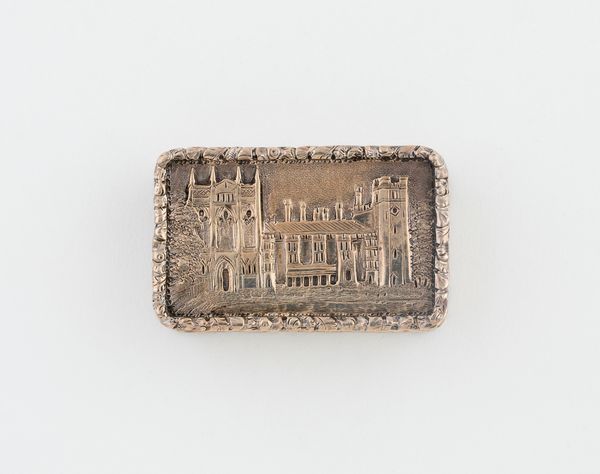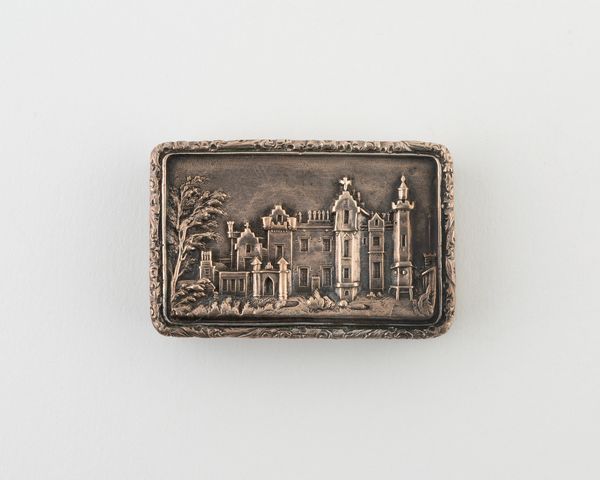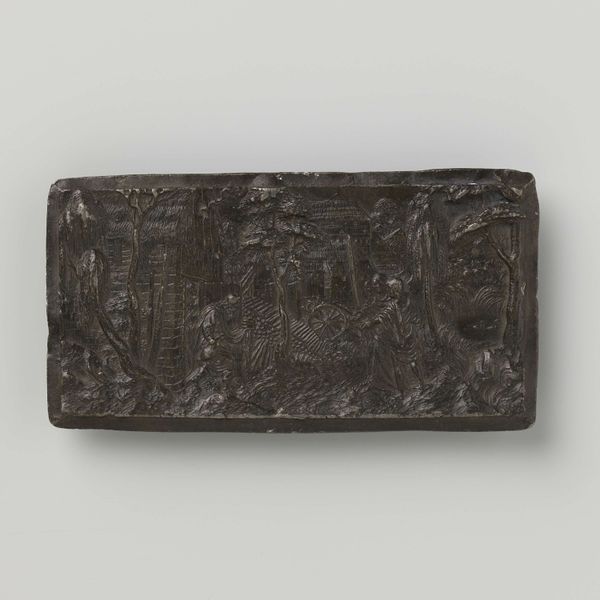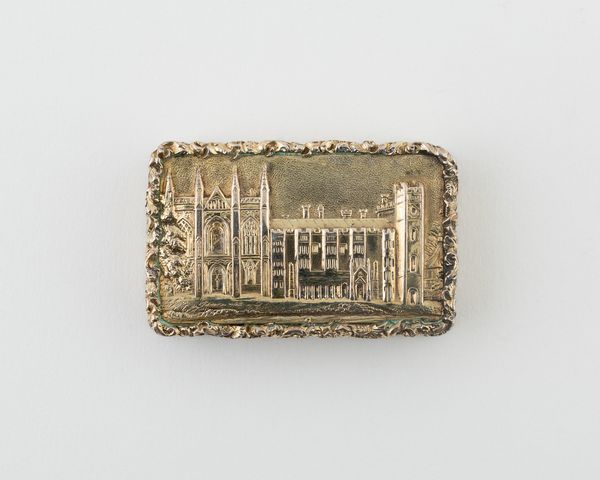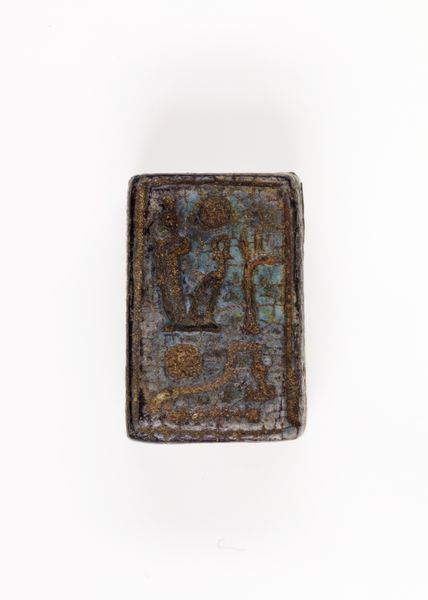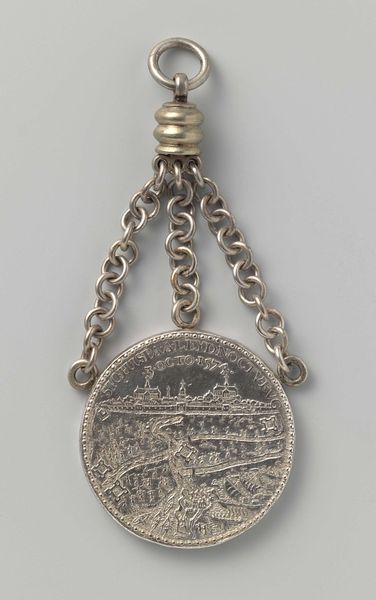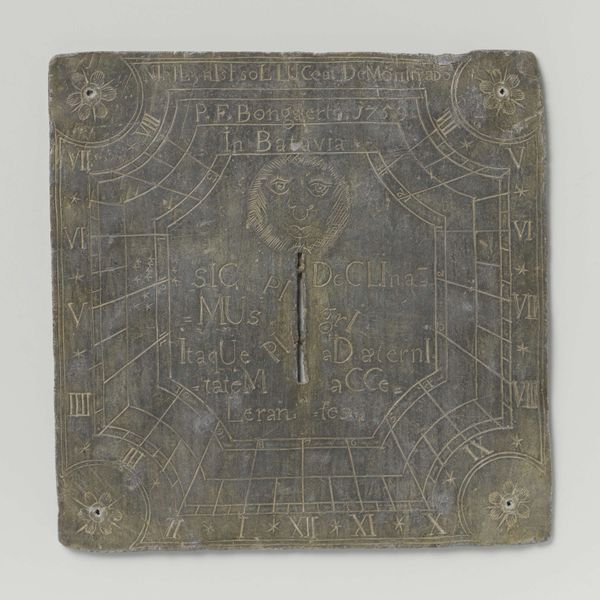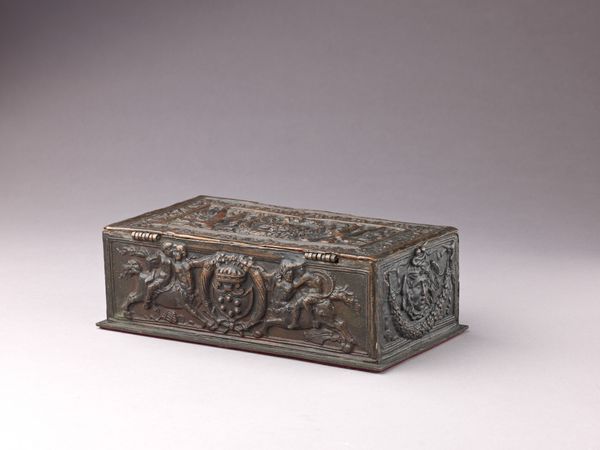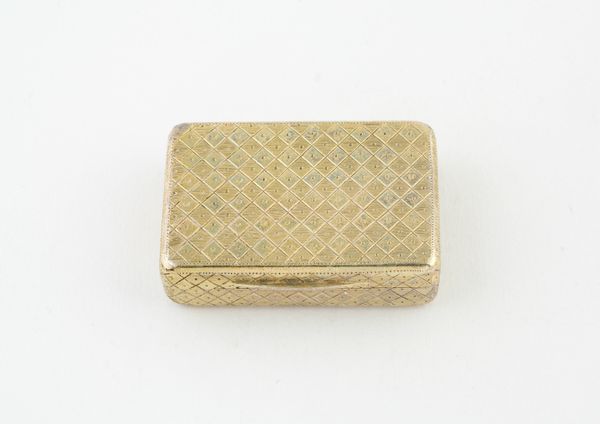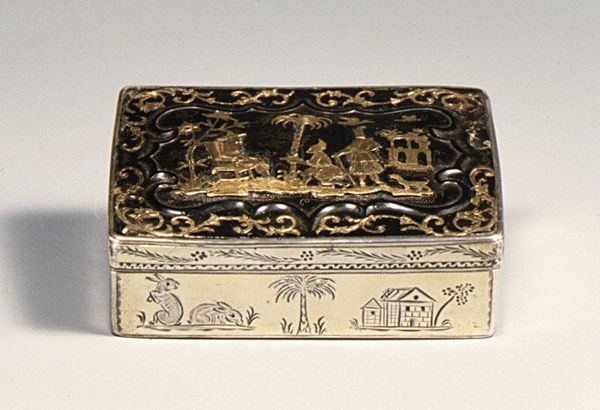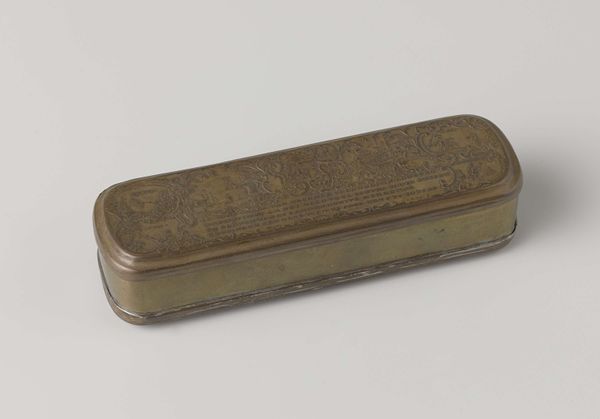
ornament, silver, metal
#
ornament
#
silver
#
metal
#
romanticism
#
decorative-art
Dimensions: 3.2 × 2.3 cm (1 1/4 × 7/8 in.)
Copyright: Public Domain
Curator: This delicate object is a vinaigrette in the shape of a book, created by Samuel Pemberton around 1818 or 1819. It resides here at the Art Institute of Chicago. Editor: Immediately striking! The book form contrasts intriguingly with the overall daintiness of it; I'm also noticing the silvery material and tiny, almost fragile details. It feels like a precious secret. Curator: The silver body is indeed ornamented with fine grape motifs. Pemberton expertly crafted this functional piece, designed to hold a sponge soaked in aromatic vinegar or perfume. It’s essentially a fashionable, personal air freshener for the early 19th century! Editor: Ah, now I see! It’s an interesting blend of ornamentation and practical craft. You know, the vine motifs have associations with classical imagery but I wonder about the silversmithing process itself – what sort of labour went into producing such intricate decorative work, given its relatively small size and functional use? Curator: A keen observation! The decoration, despite its intricacy, could have been achieved through techniques like chasing and engraving on relatively soft metal, with a specialist silversmith or workshop fulfilling commissions in specific forms; it's both visually dense and structurally clear. Note, also, the placement of the polished surfaces drawing our eye through the complex, almost claustrophobic grape vines. Editor: The contrast really enhances it. So much labour goes into an object that is ultimately…functional. Who produced the raw silver? What were the working conditions in Pemberton's workshop? And how was such a seemingly minor luxury reflective of wealth distribution at that moment? Curator: Absolutely. This vinaigrette stands as both a work of artful composition and a material artifact steeped in the history of its manufacture and usage. Editor: I'll admit, looking at its materiality has allowed me to interpret the artistic details differently. It's more than a romanticized miniature now—it's the crystallization of numerous social and economic factors. Curator: I'd say this exchange has revealed that artfully rendered design and questions of material and labour needn’t be mutually exclusive categories. Editor: Agreed; understanding the method of making offers unique perspectives to appreciate the aesthetic decisions, for sure.
Comments
No comments
Be the first to comment and join the conversation on the ultimate creative platform.
